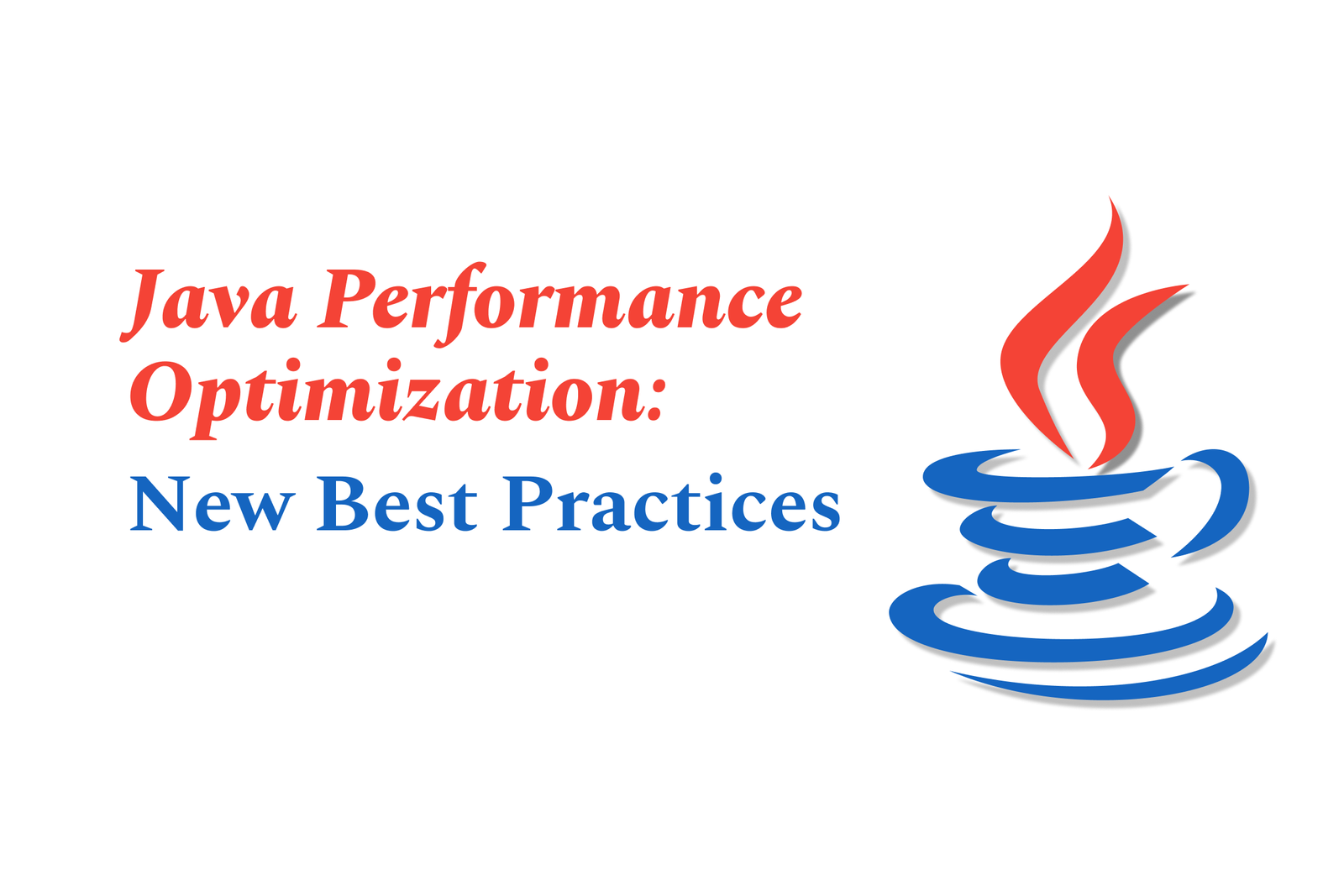Java performance optimization: new best practices
Java performance optimization focuses on enhancing application speed and efficiency through modern JVM tuning, advanced profiling tools, realistic load testing, and cloud-based scalability techniques. These best practices ensure robust, scalable, and high-performing Java applications.
Java Performance Optimization: New Best Practices
1 ) Understanding Java Performance Optimization
Java performance optimization involves techniques to write faster, more efficient code while tuning the Java Virtual Machine (JVM) to improve application speed and reduce resource consumption. It is an evolving discipline that requires continuous learning and experimentation.
2 ) Key Areas for Optimization
JVM Tuning: Adjusting JVM configurations such as garbage collection, heap size, and continuations to tune performance based on specific application needs.
Profiling and Bottleneck Analysis: Using profilers to identify which parts of the code or queries slow down the application the most.
Testing Under Load: Employing load, stress, spike, and endurance testing to simulate various performance scenarios and identify scalability limits.
3 ) Best Practices in Java Profiling
Use Modern Profilers: Popular tools include YourKit, VisualVM, JProfiler, IntelliJ Profiler, Async Profiler, Arthas, and Digma Continuous Feedback. Each offers unique insights into CPU usage, memory allocation, and scaling issues.
Combine Tools for Efficiency: Use traditional profilers alongside observability tools like Digma to accelerate data analysis and pinpoint performance bottlenecks faster.
Prioritize Sampling over Instrumentation: Sampling profilers reduce runtime overhead by periodically capturing execution snapshots, while instrumentation profilers provide detailed data but may impact application speed.
4 ) Performance Testing Methodologies
Load Testing: Assessing application behavior under expected user loads.
Stress Testing: Testing application limits under extreme conditions.
Spike Testing: Evaluating response to sudden increases in load.
Endurance Testing: Measuring performance over extended durations.
Chaos Engineering: Injecting failures to test system resilience and recovery.
5 ) Leveraging Cloud and Infrastructure Capabilities
Parallelization and Scalability: For systems like Amazon S3, distributing loads across prefixes allows scaling to thousands of concurrent requests to optimize throughput.
Caching and Edge Computing: Utilizing services like Amazon CloudFront or ElastiCache to reduce latency and increase data transfer speeds for cloud based Java applications.
Transfer Acceleration Technologies: Employing mechanisms such as S3 Transfer Acceleration to speed up data transport, especially over long distances.
6 ) Avoiding Common Pitfalls
Beware of Microbenchmarks: Isolated benchmarks may mislead; real world performance should be prioritized.
Control Variability: Stable environments and consistent test conditions yield reliable performance data.
Use Statistical Analysis: Performance data should be interpreted with proper statistical methods to make informed tuning decisions.
7 ) Continuous Learning and Experimentation
Developers are encouraged to experiment independently with JVM settings, profiling tools, and optimization techniques, especially if they lack professional exposure to performance tuning tasks. Watching expert talks, practicing with open source profilers, and analyzing real application data are good starting points.
8 ) Summary
Maximizing Java application performance today requires a combination of modern profiling tools, realistic testing methodologies, JVM tuning expertise, and leveraging cloud infrastructure optimizations. Adopting these new best practices ensures efficient, scalable, and responsive Java applications in varied environments.
https://justacademy.in/news-detail/android-accessibility-compliance-news
https://justacademy.in/news-detail/swift-6.1-preview:-exciting-features-coming-soon
https://justacademy.in/news-detail/android-split-screen-multitasking-news
https://justacademy.in/news-detail/react-native-vs-flutter:-hiring-trends-in-india
https://justacademy.in/news-detail/flutter-on-raspberry-pi:-new-examples
Related Posts
Java supports GDPR and data privacy by enabling secure data handling through encryption, controlled access, and precise data management. It allows developers to minimize PII exposure, ensure data confidentiality, and design workflows that comply with data protection regulations effectively.
Java code quality tools have evolved to include advanced static analysis, integrated security checks, and AI-powered code reviews. These updates help developers detect bugs, enforce coding standards, and enhance security, streamlining the development process and improving overall code reliability.
Java remains a cornerstone in big tech companies, evolving with modern features like records, pattern matching, and virtual threads. Its robust ecosystem, enhanced performance, and growing AI integrations keep it vital for both legacy systems and innovative new projects.
Java and CI/CD pipeline optimizations streamline Java application development by automating builds, tests, and deployments. They improve efficiency through parallelization, caching, and secure secrets management, enabling faster feedback loops and more reliable, scalable software delivery.
Java supports modern cryptography standards through its flexible Java Cryptography Architecture (JCA), enabling integration of advanced algorithms like AES, EdDSA, and post-quantum tools. Libraries like Bouncy Castle offer FIPS-certified, hardware-accelerated implementations for secure development.
Java 23 enhances record patterns by enabling concise, direct destructuring of record components within pattern matching, simplifying type checks and data extraction. This improvement boosts code readability and expressiveness by reducing boilerplate in handling immutable data classes.
Java remains a top choice for mobile app backends, powering scalable, secure, and high-performance server-side solutions. Latest trends include cloud-native microservices, reactive programming, and enhanced JVM optimizations, enabling efficient, flexible, and robust mobile backend development.
Java SE 24 and LTS Java SE 21 offer enhanced features and performance, while Apache Spark 4.0.0 introduces Scala 2.13 support and advanced ML and SQL capabilities. Together, they empower developers to build scalable, high-performance data applications with modern tools.
JUnit 5 modernizes Java testing with a modular architecture, improved assertions, and seamless Java 8+ support. Beyond JUnit, tools like Mockito and AssertJ enhance mocking and assertions, creating a powerful, flexible ecosystem for writing clean, efficient Java unit tests.
Java plays a pivotal role in cloud automation tools by providing a robust, platform-independent language used to build scalable automation frameworks like Jenkins and Selenium, enabling efficient CI/CD pipelines, testing, and orchestration across diverse cloud environments.










